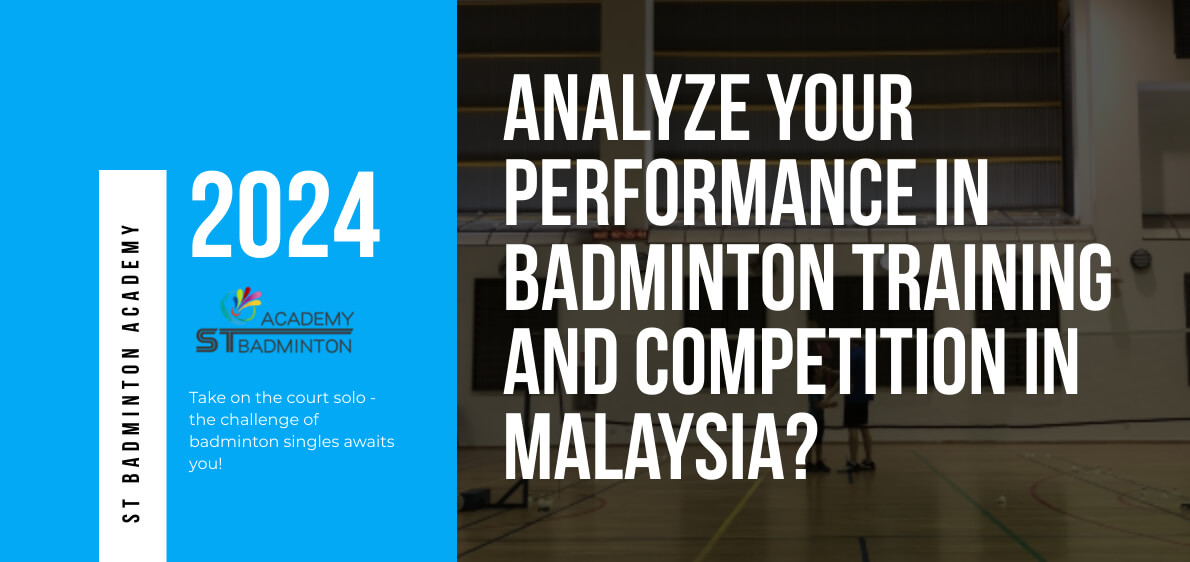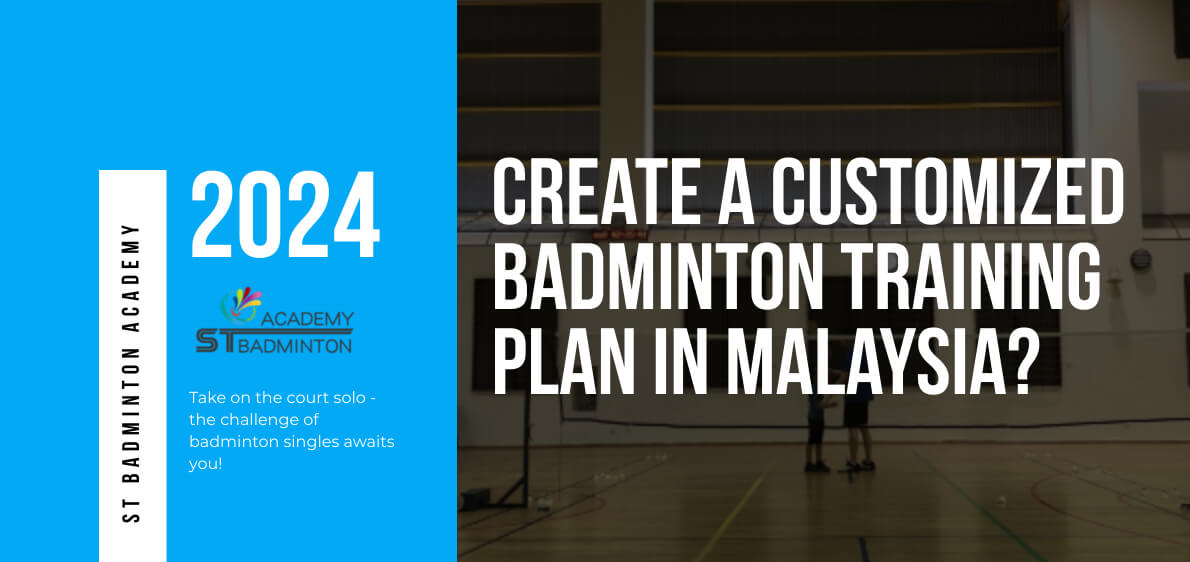Welcome to the ST Badminton Academy in Malaysia! Do you struggle with your badminton defensive play? Are you constantly getting caught off guard by your opponent’s shots? If so, don’t worry – you’re not alone. Defensive play can be one of the most challenging aspects of badminton to master, but it’s also one of the most important. Without a strong defense, even the best offensive players will struggle to win matches.
Fortunately, there are expert tips and techniques that can help strengthen your defensive game. In this article, we’ll explore some of these strategies in detail.
Whether you’re a beginner looking to improve your skills or an experienced player seeking new ways to enhance your gameplay, our tips will give you the tools you need to become a more effective defender on the court.
So let’s get started!
Basics Of Defensive Play in Malaysia
When it comes to badminton, playing defensively can be just as important as having a strong offense. Quick reflexes and proper court positioning are necessary for effective defensive play. The ability to anticipate your opponent’s attacking shots is also crucial.
To begin strengthening your defense, start with preparation drills that focus on footwork and reaction time. These drills can help you develop the quick reflexes needed to react to your opponent’s shots quickly and effectively.
Additionally, practicing net play will improve your ability to defend against close-range attacks.
When playing defensively, remember to always maintain proper court positioning by staying toward the back of the court. This allows you more time to respond to your opponent’s shots and decreases their chances of hitting successful attacking shots.
By incorporating these basic techniques into your game plan, you’ll be well on your way to becoming an expert in defensive play without sacrificing your attacking style!
Footwork Strategies
Let’s talk about quick stepping and shuffling footwork to help strengthen our badminton defensive play. We can use these strategies to gain a competitive edge and become better players!
Quick Stepping
When it comes to badminton, defensive play is just as important as offensive play.
One key strategy for improving your defense is reactive footwork. This means being able to quickly move around the court in response to your opponent’s shots. Anticipating their moves and defending angles will also help you stay one step ahead of them.
Quick stepping can be practiced by setting up cones or markers on the court and practicing moving between them as quickly as possible. With enough practice, this footwork strategy can become second nature during a game.
Shuffling Footwork
Now that we’ve discussed the importance of reactive footwork in badminton, let’s take a closer look at shuffling footwork as another key strategy for improving your defense.
Shuffling footwork involves moving laterally across the court and is particularly effective when defending against crosscourt shots or drop shots.
In-depth drilling can help you master this technique, with mental preparation playing an important role in ensuring you’re always ready to respond quickly to your opponent’s moves.
Good defensive positioning is also crucial here, so it’s important to practice staying low and keeping your racket up while shuffling from side to side.
With enough practice, incorporating shuffling footwork into your game will become second nature.
Return Of Serve
When it comes to the return of serve, predicting serves is key. Experienced players can often tell where a service will go based on their opponent’s body language and racquet position.
To improve your defensive positioning during this critical moment in the game, focus on keeping your feet light and quick so that you can move fluidly to wherever the shuttlecock goes.
In addition to physical skills, maintaining a strong defensive mindset is essential for successfully returning serves. This means staying calm and focused even when under pressure from an aggressive opponent.
Defensive drills such as practicing footwork or reacting quickly to unexpected shots can help build up mental toughness over time. With consistent practice both physically and mentally, your ability to handle tough returns will improve significantly.
Choosing The Right Racquet
According to our badminton coach, when it comes to badminton, choosing the right racquet is crucial for players of any level. The correct grip size can affect your ability to control the shuttle and execute shots with precision.
Court positioning also plays a vital role in the defensive play as it allows you to anticipate your opponent’s moves and react accordingly.
To start, determining the correct grip size is essential to ensure that you have complete control over your racquet. A grip that is too small or big can result in discomfort, affecting your game negatively.
Additionally, having a defensive mindset means being aware of where you are on the court at all times. This includes knowing how far back from the net you should be when defending against smashes and drop shots.
Shot selection and shuttle control are other factors to consider when playing defensively. Choosing which shot to make based on your position on the court will determine whether or not you’re able to regain control during rallies.
Shuttle control involves mastering techniques such as clearing and blocking so that you can keep up with rapid-fire exchanges without losing momentum.
In summary, selecting the right racquet isn’t just about finding one that feels comfortable; it’s about improving overall gameplay by understanding court positioning, developing a defensive mindset, making smart shot selections, and perfecting shuttle control. By incorporating these tips into your training regime, you’ll be well-equipped to handle whatever challenges come your way on the court!
Using Your Opponent’S Strength Against Them
Other than using a good badminton racket and best badminton resting in Malaysia, one effective way to use your opponent’s strength against them is by studying their serving placement. By analyzing where they tend to serve, you can position yourself in a strategic manner and anticipate their next move. This not only improves your reaction time but also allows you to block angles that they may have otherwise taken advantage of.
Another way to utilize your opponent’s strengths is through net play. If they have powerful shots from the backcourt, try playing more aggressively at the net. This forces them to rush their shots, potentially causing mistakes or allowing you to take control of the rally. Additionally, practicing blocking techniques can aid in defense against power shots.
Remember, badminton is a mental game as much as it is physical. It’s essential to stay focused and be aware of your opponent’s moves and tendencies during the match.
With these tips for using your opponent’s strengths against them, you’ll be able to improve your defensive play and ultimately become a stronger player overall.
Blocking & Hitting Techniques
As we learned in the previous section, using your opponent’s strength against them can be a game-changer. Now let’s move on to blocking and hitting techniques that will help strengthen your badminton defensive play.
To improve your defensive positioning, it is essential to have quick reflexes and awareness of your surroundings at all times. Reaction drills are an excellent way to develop these skills. Incorporating drills such as shadow footwork or partner rallies can aid in building agility, speed, and reaction time needed for effective defense.
In addition to reaction drills, having a solid understanding of defensive strategies is crucial. Defensive mindset and awareness of where you need to be positioned during gameplay can make all the difference when playing defensively.
To emphasize this point further, here’s a table outlining some key points:
| DEFENSIVE POSITIONING | DEFENSIVE MINDSET |
|---|---|
| Stay low | Always anticipate |
| Keep center court | Be prepared |
| Move quickly | Stay focused |
| Watch for openings | Work hard |
| React immediately | Trust yourself |
By incorporating these tips into your training regime, you’ll be well on your way towards strengthening your badminton defensive play. Remember always to keep a positive attitude and stay motivated throughout the process!
How To Cut Off The Attack
I think footwork is key for any defensive play in badminton, so we should talk about how to move efficiently to keep up with the attack. To really strengthen our forehand and backhand defense, we should discuss the proper technique for hitting those shots. Finally, anticipation is also important, so let’s explore strategies for predicting our opponent’s next move.
Footwork
Are you tired of constantly being on the defensive in your badminton games?
It’s time to step up your game and improve your footwork.
Split step timing is crucial for cutting off attacks, as it allows you to quickly react and move towards the shuttle.
Defensive positioning also plays a major role in improving your defense, so make sure to position yourself properly depending on where the opponent is hitting from.
And don’t forget about shuttle control – practicing controlling the shuttle will give you more confidence when defending against powerful shots.
With these tips, you’ll be able to strengthen your badminton defensive play in no time.
Forehand/Backhand Defense
Now that we’ve covered the importance of split-step timing and defensive positioning, let’s focus on specific techniques to cut off attacks.
Forehand and backhand defense are essential skills in badminton as they allow you to create distance between yourself and your opponent while still maintaining control over the shuttle.
Net defense is particularly important when dealing with fast shots from close range.
Proper defensive placement can also make all the difference – be sure to position yourself based on where your opponent is hitting from.
By mastering forehand and backhand defense, you’ll have a strong foundation for cutting off attacks during gameplay.
Anticipation
Now that we’ve covered the importance of timing drills and defensive positioning in cutting off attacks, let’s discuss another crucial skill – anticipation.
Court awareness is essential in predicting your opponent’s next move, allowing you to position yourself for a quick response. By paying close attention to their body language and shot selection, you can anticipate where they’ll hit the shuttle and adjust your stance accordingly.
Anticipation works hand-in-hand with split step timing and proper defensive placement, giving you an edge on defense. With these skills combined, you’ll be able to effectively cut off attacks during gameplay.
Deception & Placement
When it comes to badminton defensive play, incorporating deception tactics and precise placement can greatly improve your game.
A key aspect of this is mastering parrying shots, which involves redirecting incoming shots from your opponent with a short, controlled return that puts the shuttlecock in an advantageous position for you.
Another important element is net defense, where positioning yourself close to the net and being ready to react quickly can help you intercept any drop shots or other deceptive plays from your opponent.
Additionally, paying attention to court positioning and serving angles can give you an edge when it comes to anticipating your opponent’s next move and setting up your own counterattack.
With practice and focus on these techniques, you’ll be able to outmaneuver even the toughest opponents on the court.
Forecourt & Backcourt Defense
As we learned in the previous section, deception, and placement are crucial elements of badminton gameplay. However, defense is equally important to win matches. To become a well-rounded player, you must focus on both offense and defense.
When it comes to forecourt and backcourt defense, tracking shots is key. Keep your eyes locked on the shuttlecock’s trajectory and position yourself accordingly. Additionally, smashes defense requires quick reflexes and good anticipation skills. Stay on your toes and be ready to react at any moment.
Net defense involves being able to intercept incoming shots before they cross the net. This means having excellent shuttle positioning and being prepared for unexpected drops or drives from your opponent.
Lastly, court positioning determines how effective your overall defensive play will be. Always stay alert and adjust your movements according to where the shuttlecock is headed.
Improving your defensive skills takes time and practice, but with dedication, you can become an expert defender on the court. Remember to focus on tracking shots, smashes defense, net defense, shuttle positioning, and court positioning during training sessions so that these techniques become second nature during games.
Mental Strategies For Defensive Play
To become a successful badminton defender, mental strategies are as important as physical skills.
Visualization techniques can help you anticipate your opponent’s shots and react quickly to them. It involves imagining different game scenarios in your mind and mentally practicing how you would respond to each one.
Defensive positioning is also crucial for effective play. You need to maintain a proper distance from the net while still being able to reach any incoming shuttlecock.
Pacing yourself is equally essential since defensive play requires more energy than offensive play.
Communicating effectively with your partner helps prevent misunderstandings and ensures that both of you cover all areas of the court.
Managing pressure by staying calm and focused is vital when defending against aggressive opponents who try to intimidate you into making mistakes.
By mastering these mental strategies, you can improve your badminton defense and take your gameplay to the next level without relying solely on physical agility or strength.
Frequently Asked Questions

How Can I Improve My Reaction Time On The Court?
Struggling with your reaction time on the badminton court? Don’t worry, there are plenty of ways to improve.
Start by incorporating focusing drills and footwork practice into your training routine. These exercises will help you react quickly and move efficiently around the court.
Additionally, mental preparation is key – make sure you’re mentally alert and ready for each play. Watch other players’ techniques closely in order to learn from their movements and tendencies.
Finally, strategy planning can go a long way toward improving your reaction time. By anticipating where the shuttlecock might go, you’ll be able to position yourself better and respond more quickly when it comes your way.
What Are Some Drills I Can Do To Improve My Defensive Play?
What are some drills I can do to improve my defensive play?’ is a common question among badminton players looking to up their game.
To start, footwork practice is crucial for any strong defense. This involves quick movements and positioning on the court, allowing you to be in the right spot at the right time.
Tracking shots also requires good timing practice, which can be honed through shadow drills where you simulate player movement without hitting a shuttlecock.
Additionally, improving your serve placement can help set up better opportunities for counter-attacks or force errors from your opponent.
By incorporating these suggested exercises into your training routine, you’ll notice significant improvements in your overall defensive gameplay.
Is It Better To Play Close To The Net Or Farther Back When Defending?
When it comes to badminton defensive play, many players wonder whether they should be playing close to the net or farther back.
The answer lies in a combination of factors, including your backhand defense skills, footwork drills, shot placement abilities and court positioning.
Depending on these factors, you may need to adjust your defensive positioning accordingly.
For example, if you’re confident in your backhand defense and have strong footwork skills, playing closer to the net can help you intercept shots earlier and put pressure on your opponent.
On the other hand, if you struggle with backhand defense or are still working on developing your footwork drills, staying farther back can give you more time to react and return shots effectively.
Ultimately, finding the right balance between these different elements is key to improving your overall badminton defensive play.
How Can I Anticipate My Opponent’s Shots More Effectively?
To anticipate your opponent’s shots more effectively, it’s important to work on reading the shuttle and improving your footwork drills. By doing so, you can better position your body for defensive strategy and shot selection that will help you become a stronger player overall.
To enhance your skills in this area, try incorporating different types of footwork into your practice routine such as cross steps or running steps. Additionally, pay attention to how your opponent is hitting the shuttle and adjust accordingly by positioning yourself at an angle or moving towards one side of the court.
With these techniques in place, you’ll be able to anticipate shots with greater accuracy and make quick decisions based on what you see happening on the court.
What Should I Do If My Opponent Has A Particularly Strong Smash?
If your opponent has a particularly strong smash, you might find yourself struggling to defend against it. However, there are several things you can do to improve your chances of success.
Firstly, communicate better with your partner or teammates about the situation and explore options for different defensive strategies.
You can also deploy tactics like changing up the pace of the game or moving your opponent around more to tire them out.
Additionally, adjusting your positioning on the court and developing a specific strategy for defending against smashes can make all the difference in winning or losing a point.
Learn Badminton Defensive from Professional Badminton Coach in Malaysia
In conclusion, badminton defensive play is an essential component of the game that requires constant practice and improvement. Through expert tips and drills, players can enhance their reaction time on the court and better anticipate their opponent’s shots.
Playing closer to the net or farther back depends on a player’s skill level and preference but staying agile and alert is crucial in both positions.
To anticipate an opponent’s shot more effectively, focus on their body position and racket head movements before they make contact with the shuttlecock.
Lastly, if your opponent has a particularly strong smash, don’t panic! Stay calm, move quickly toward the direction of the shuttlecock, and try to return it with as much control as possible. Remember: defense wins matches too!
Overall, mastering badminton defensive play takes patience, practice, and perseverance. So get out there on the court and keep improving – who knows? You might just become a defensive powerhouse!

Back to the training home page.




